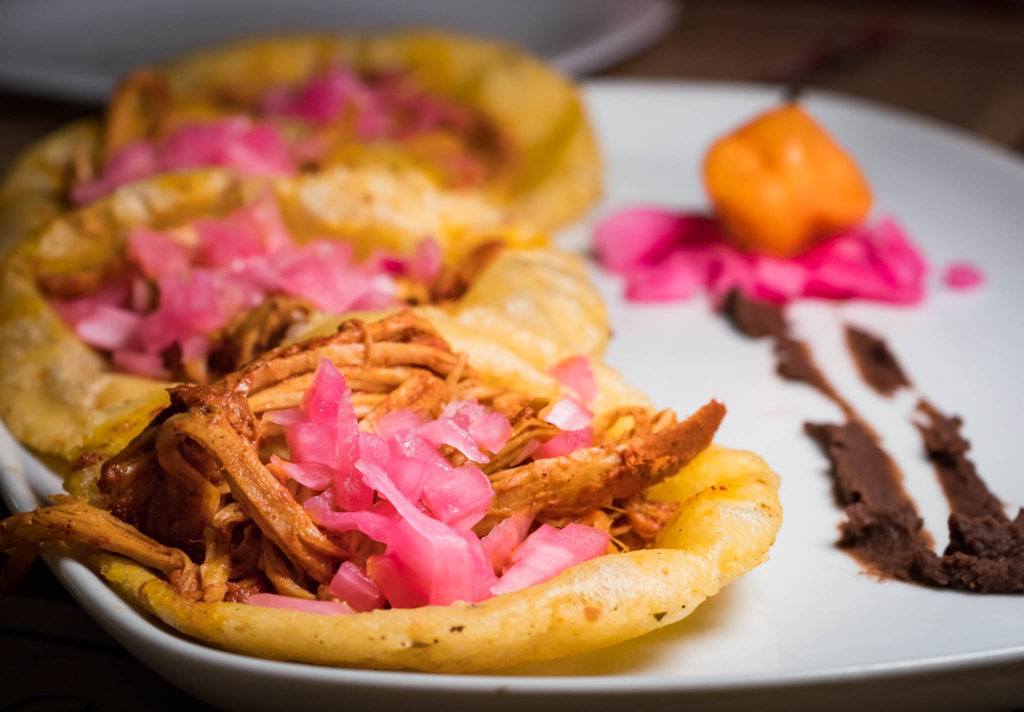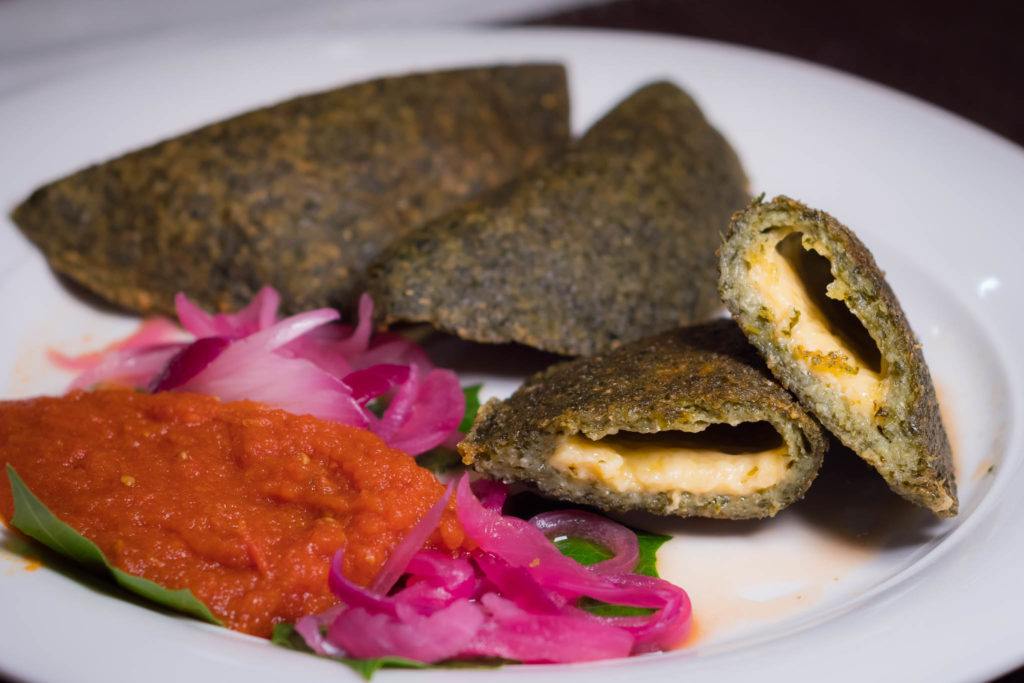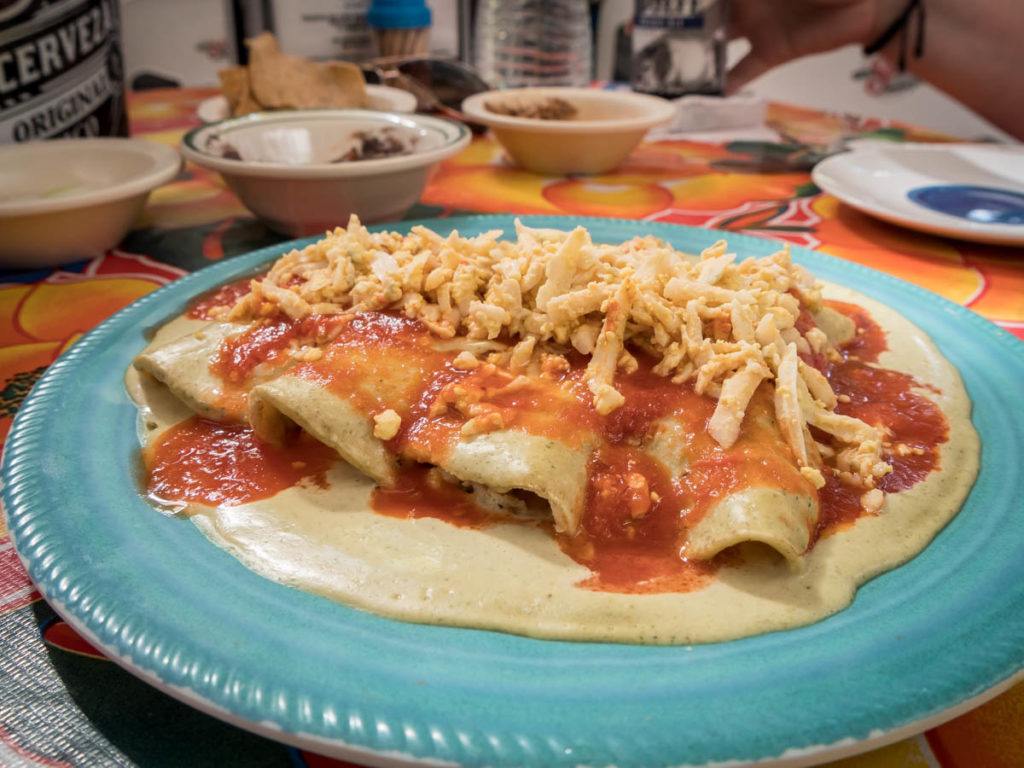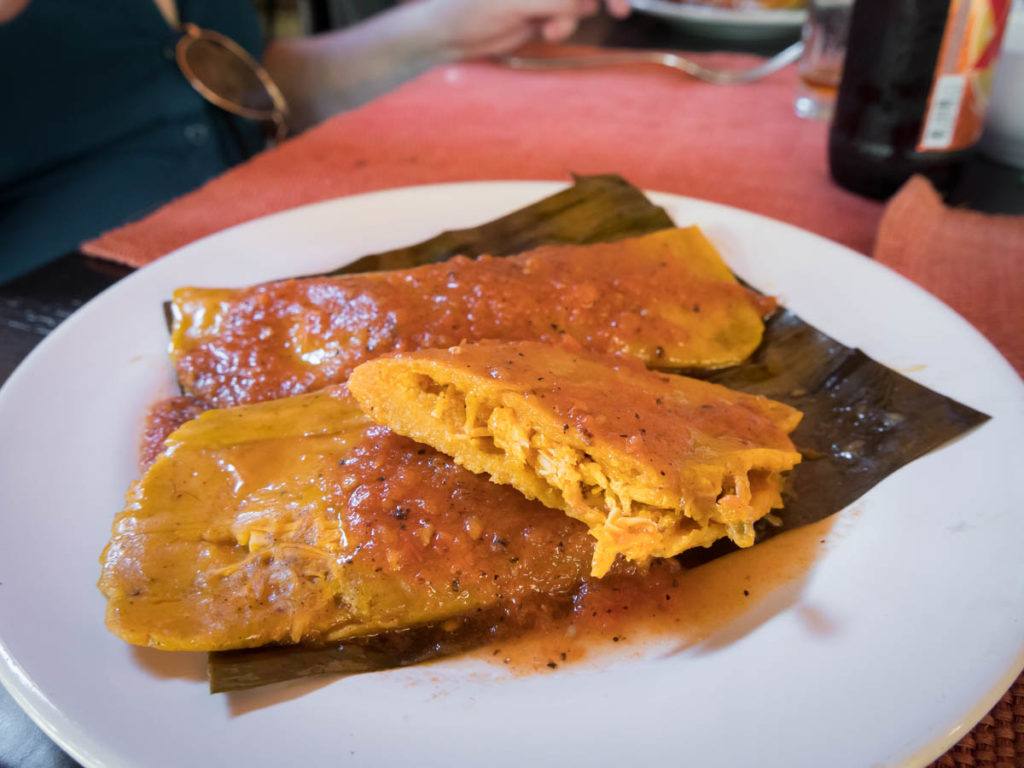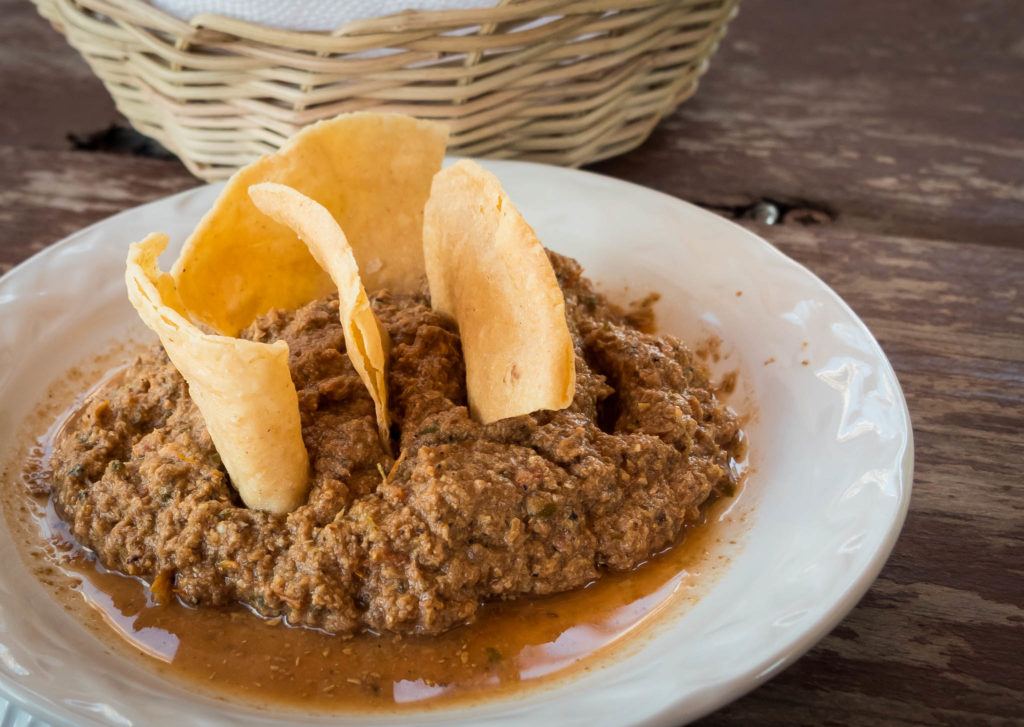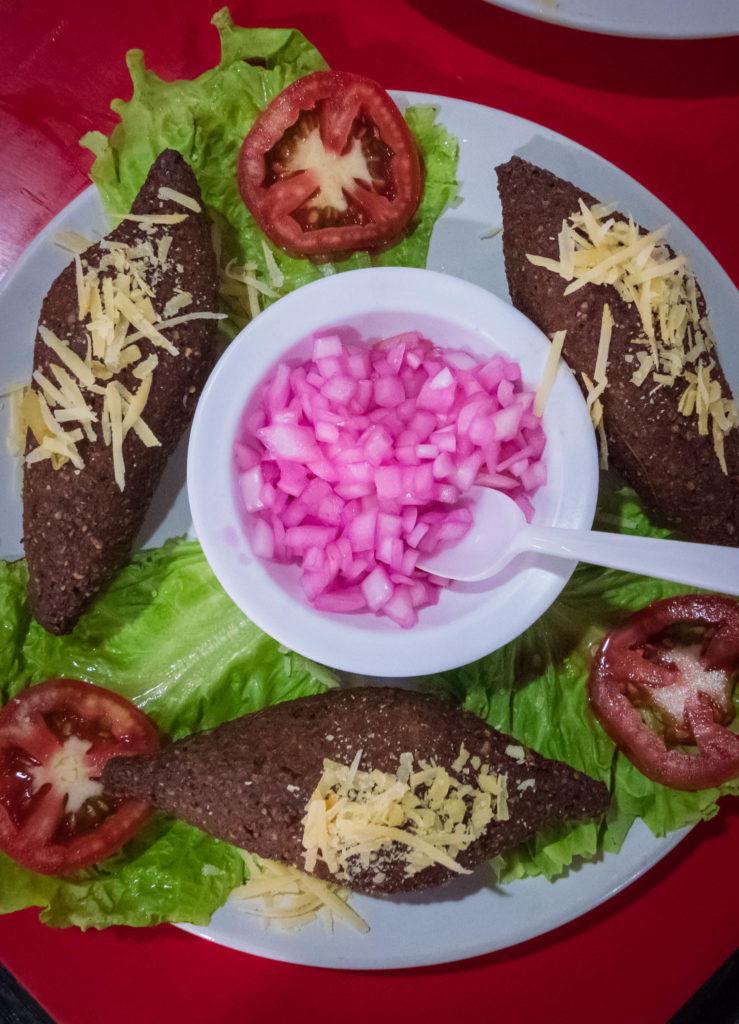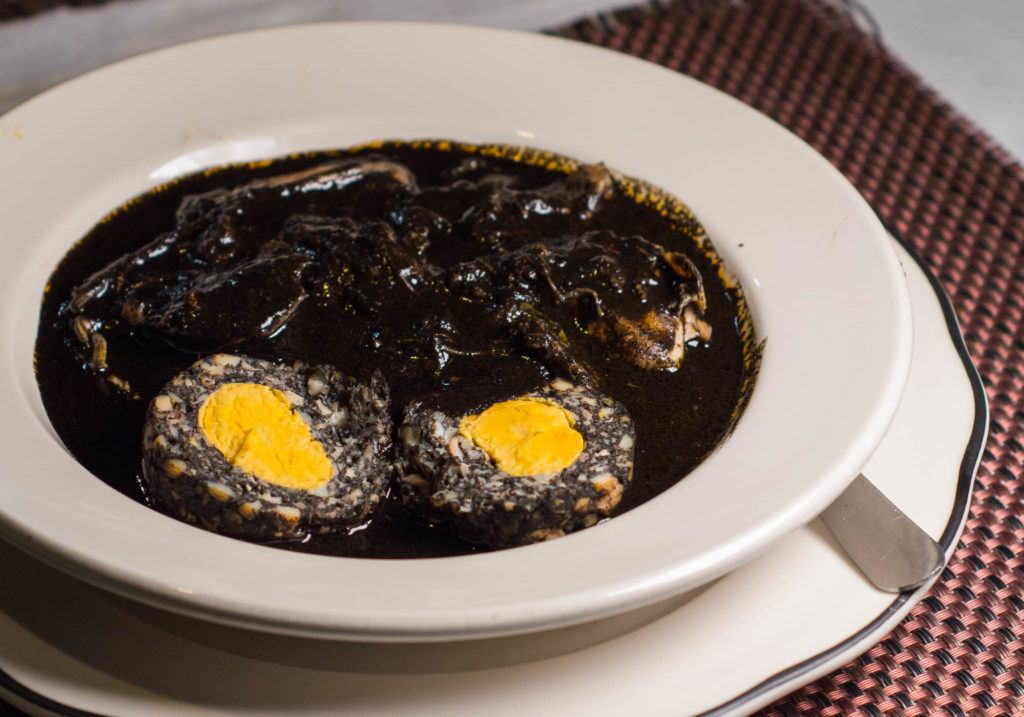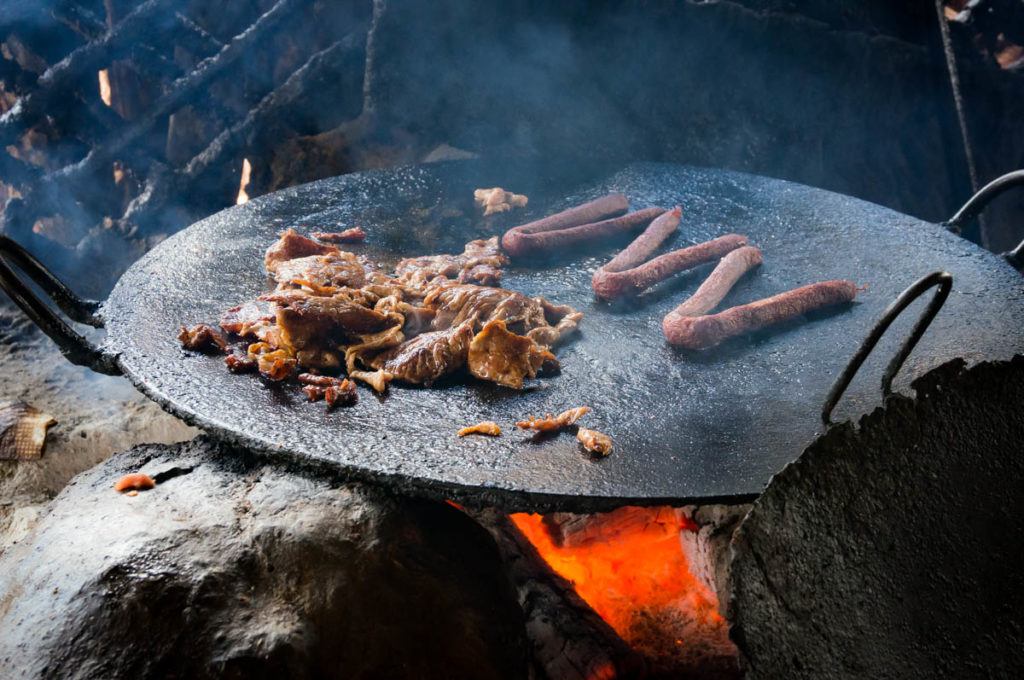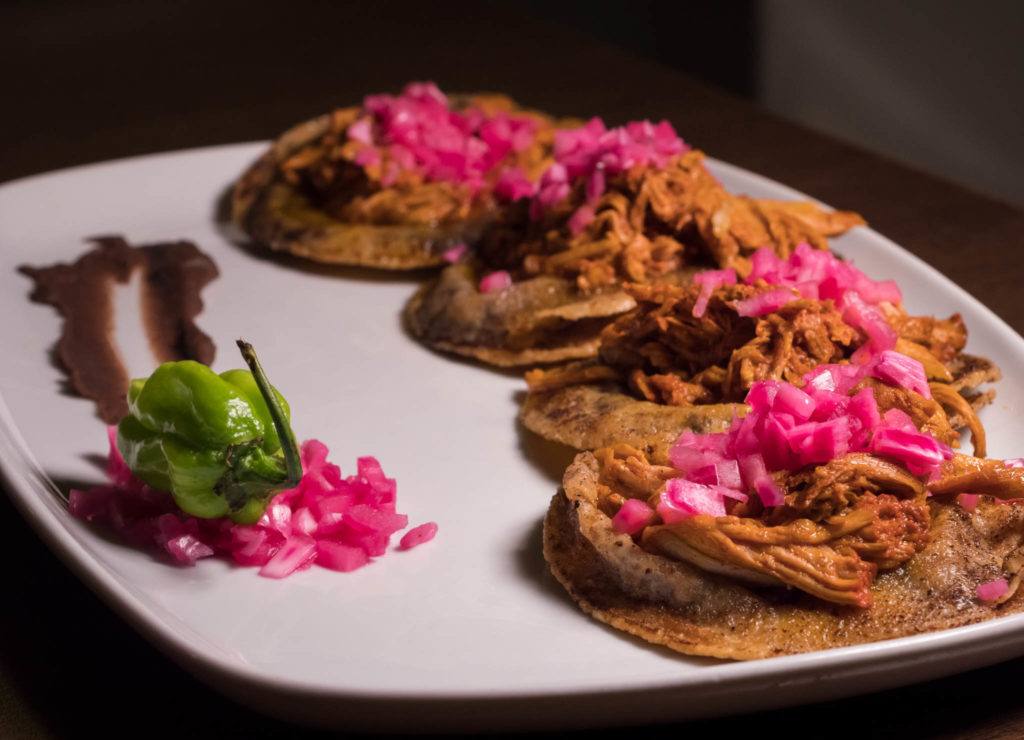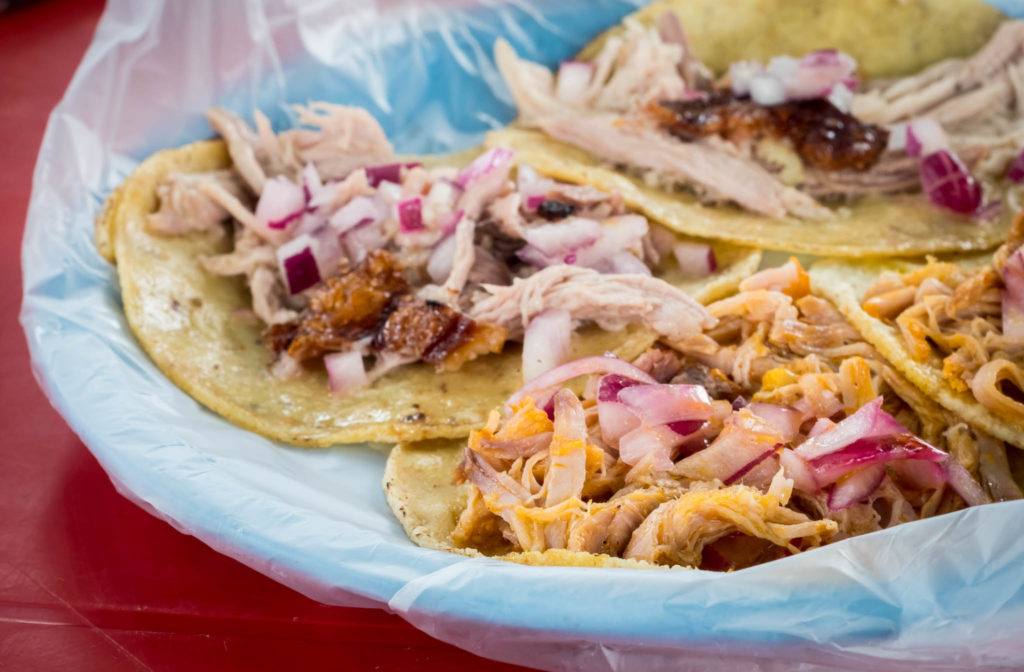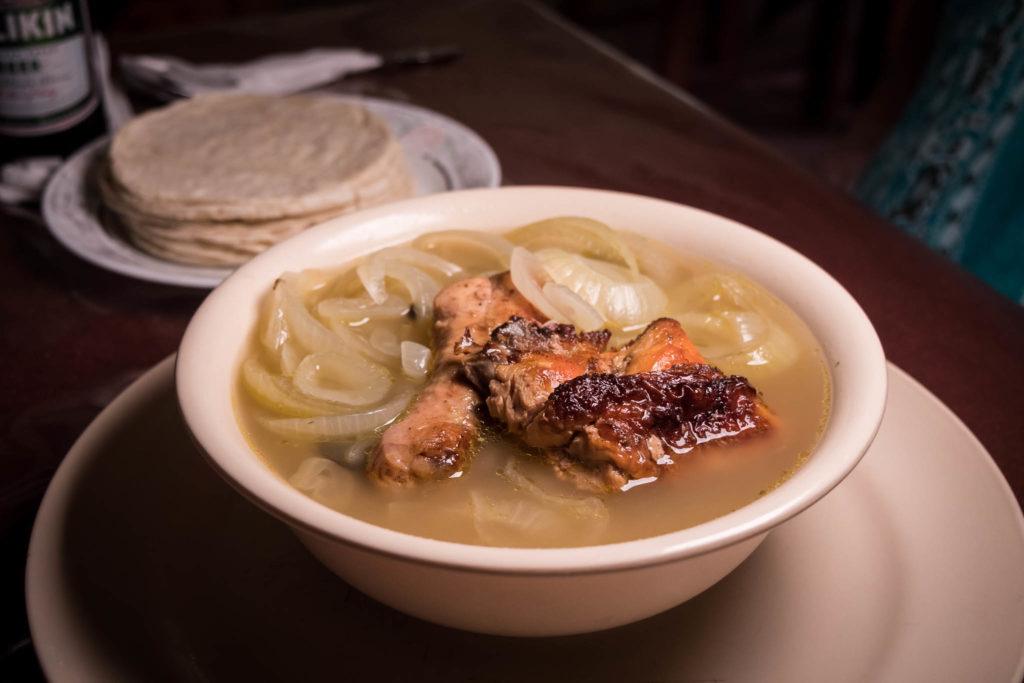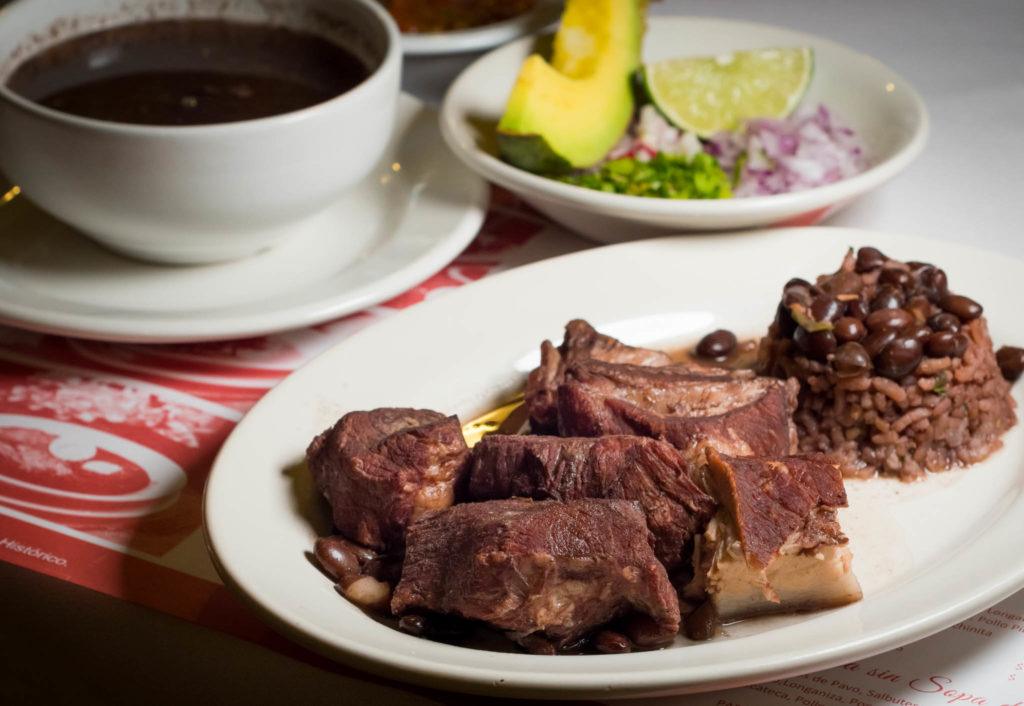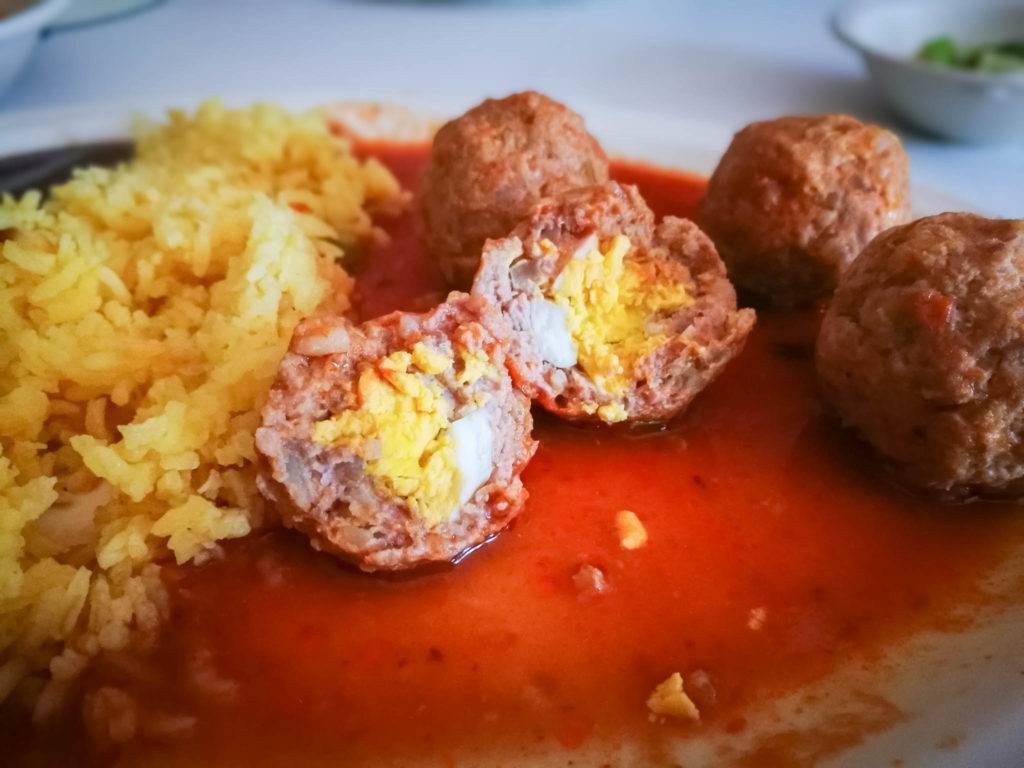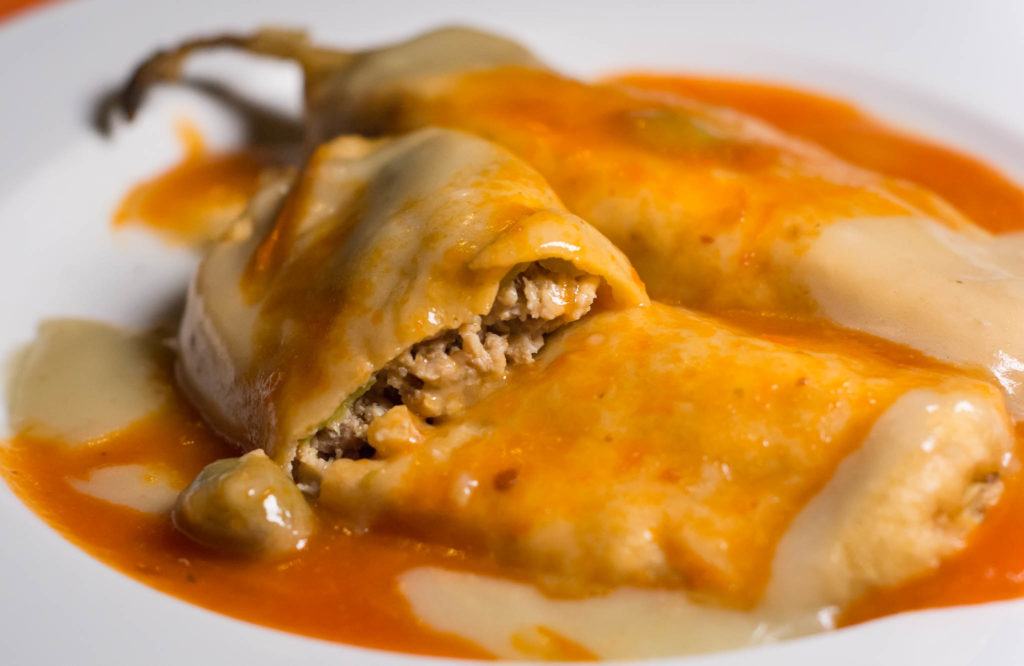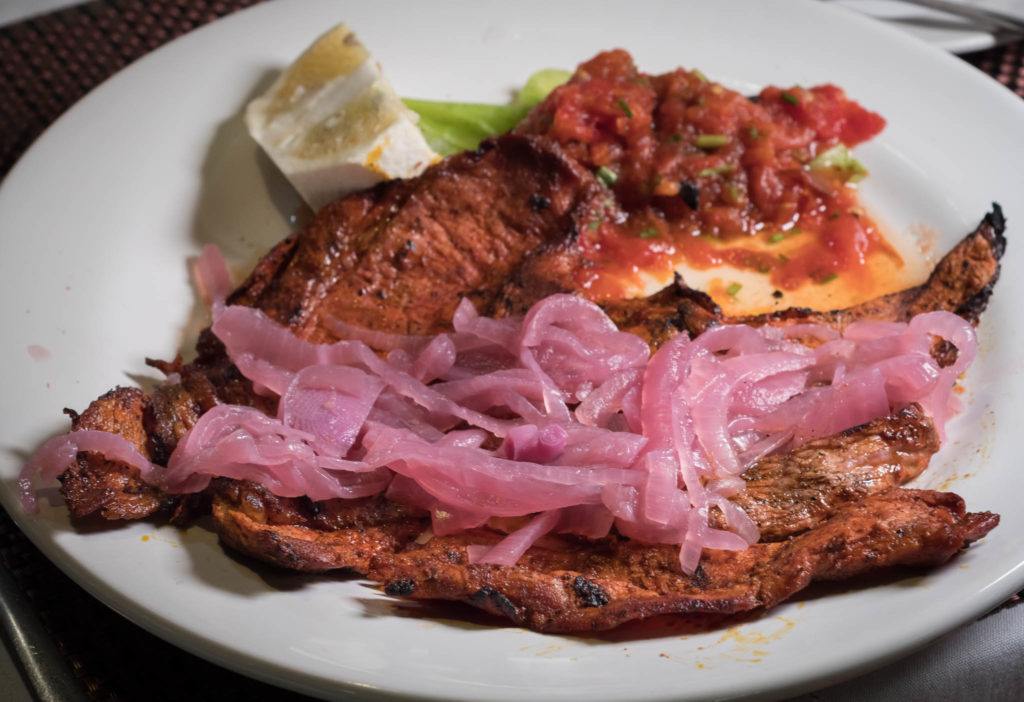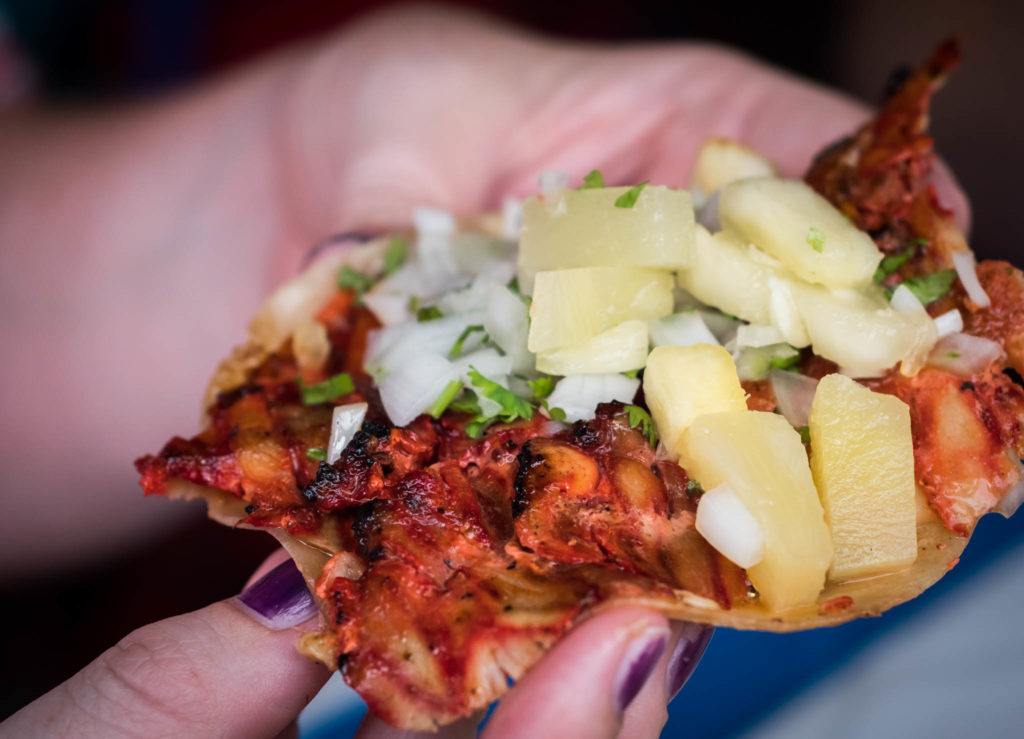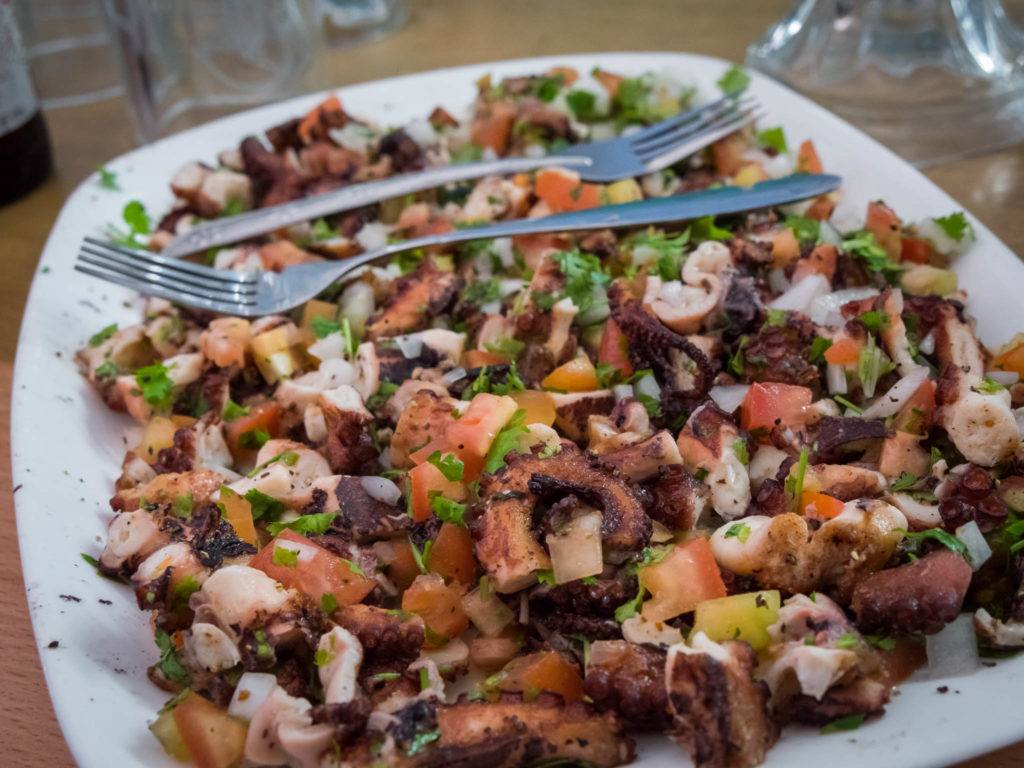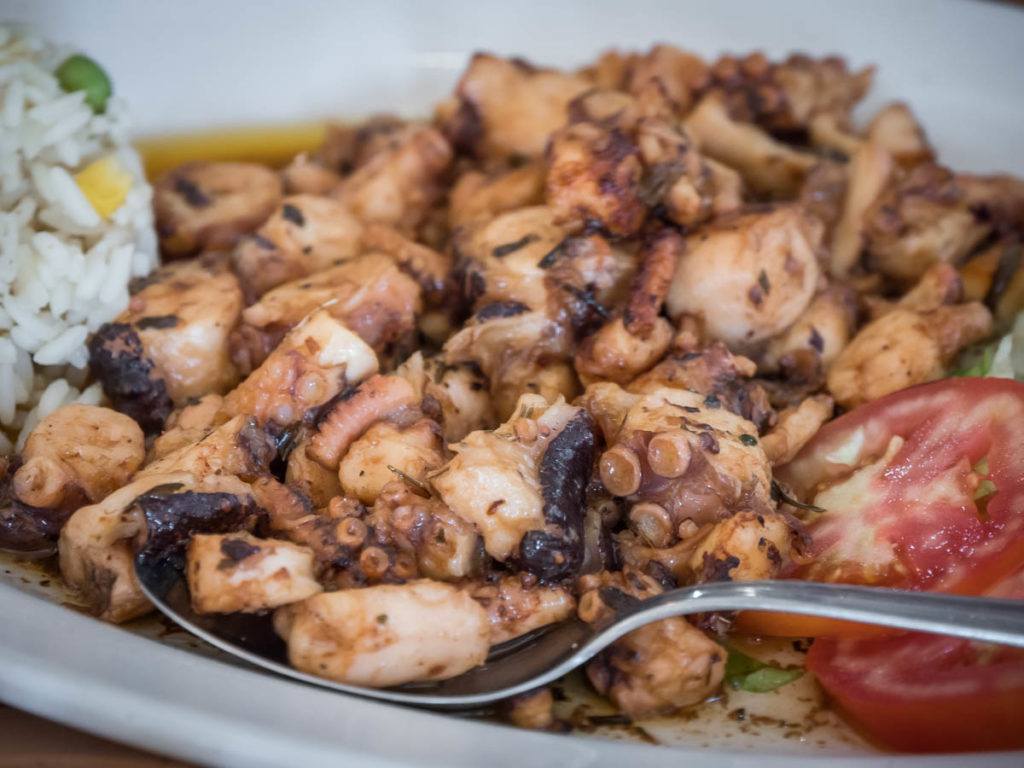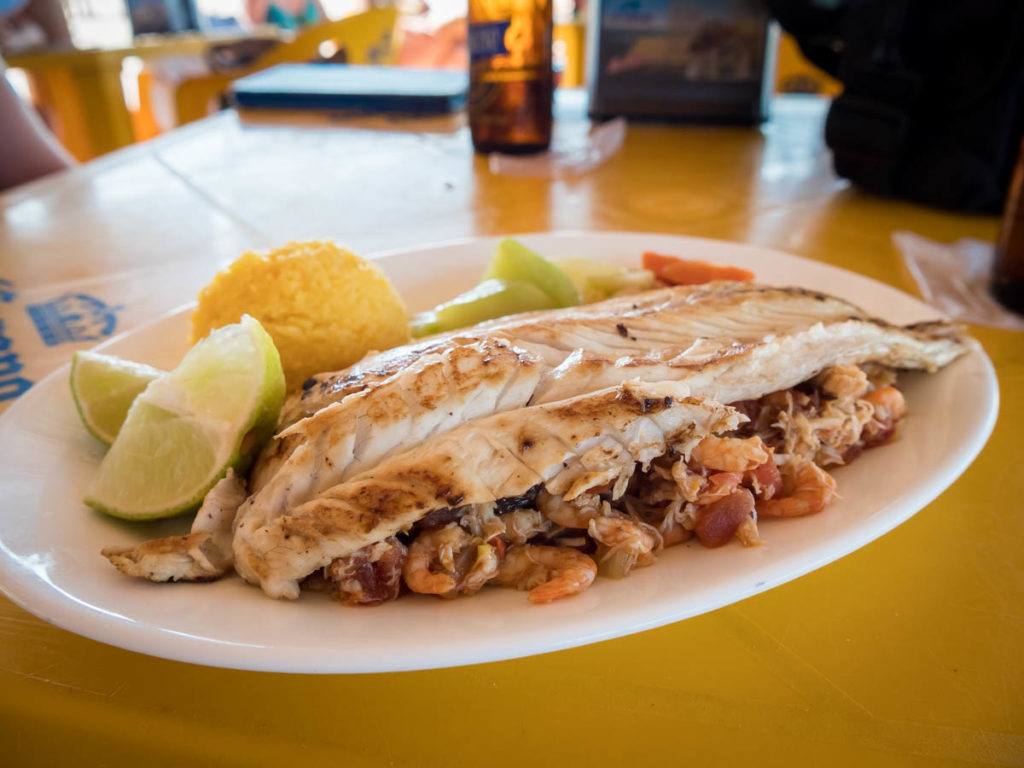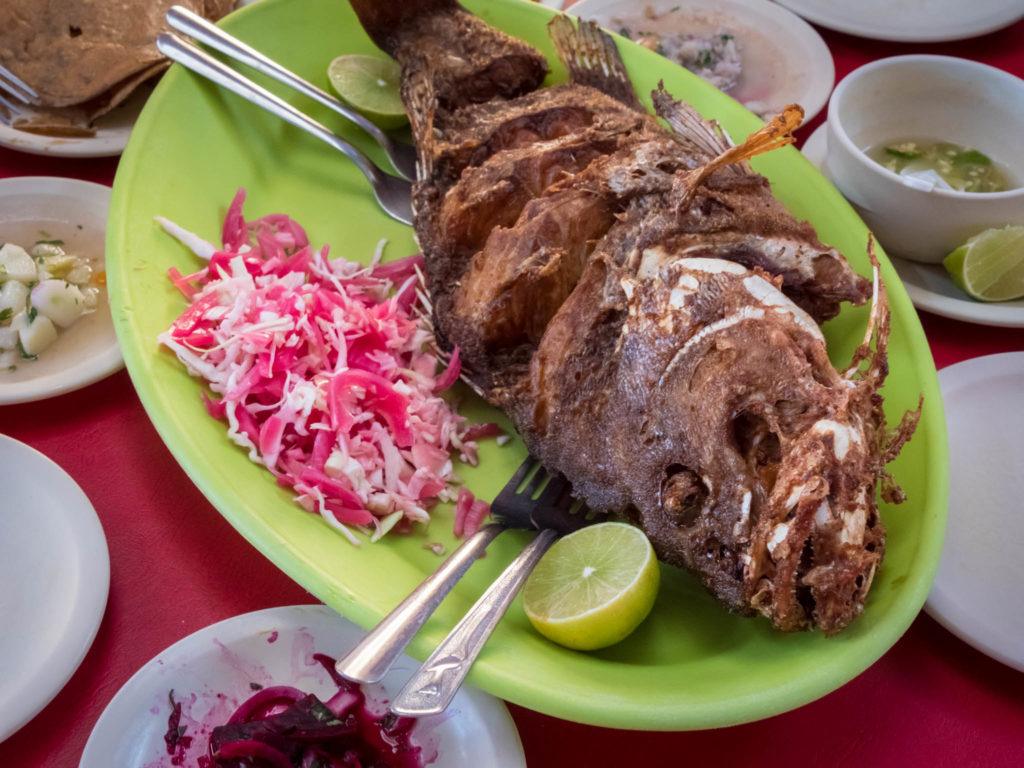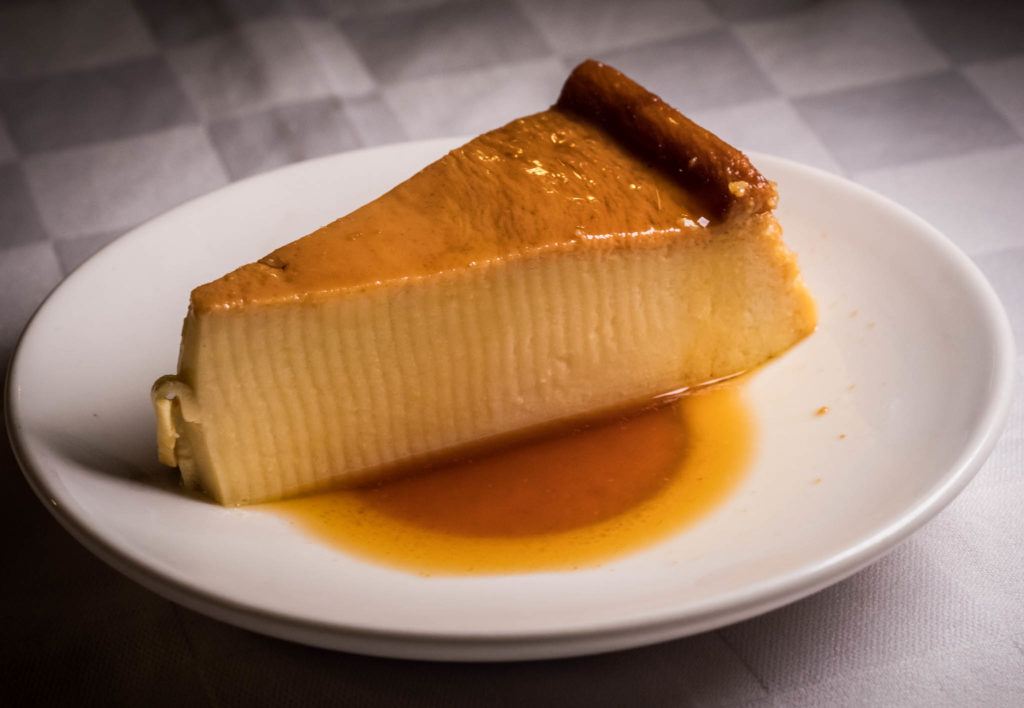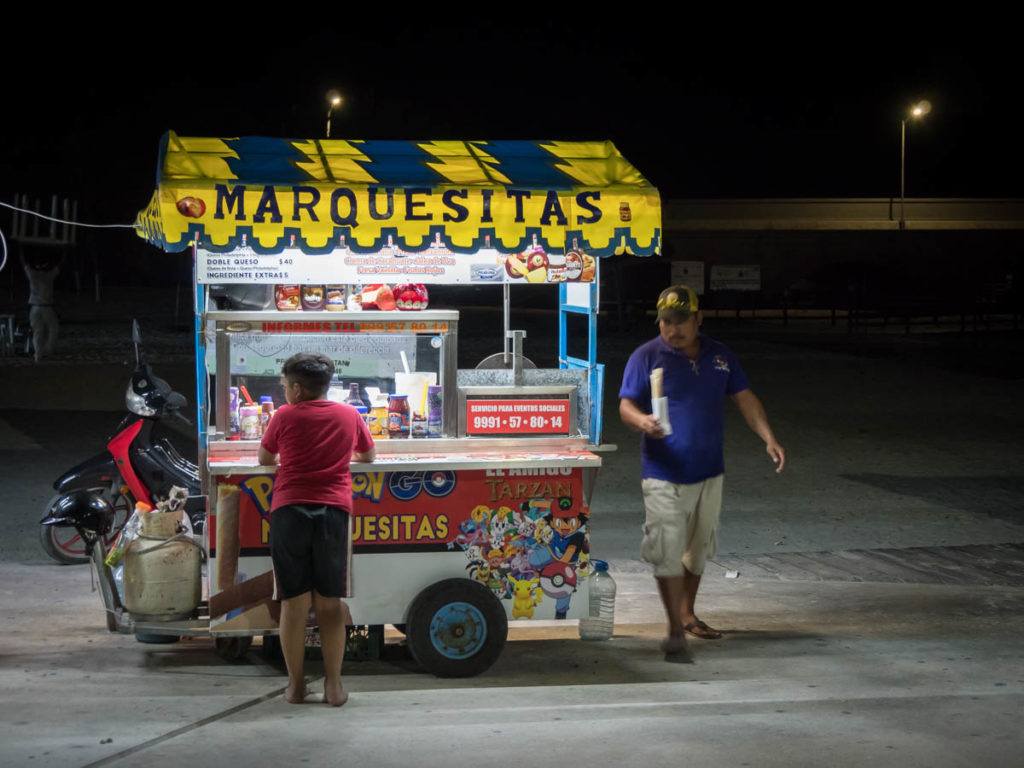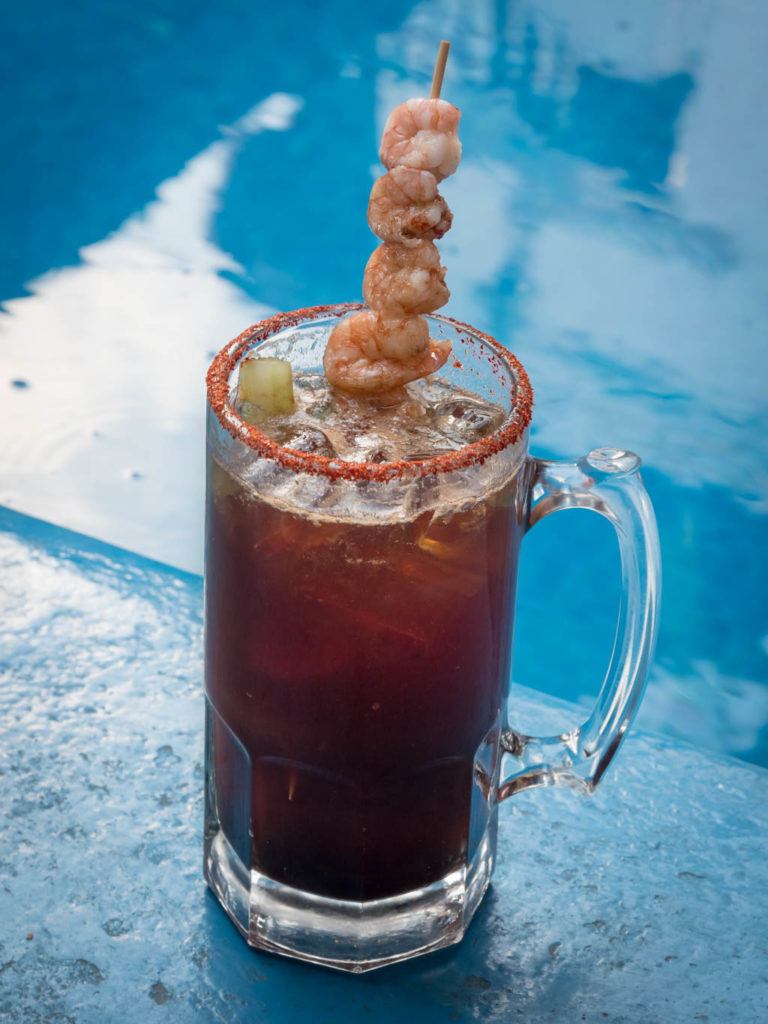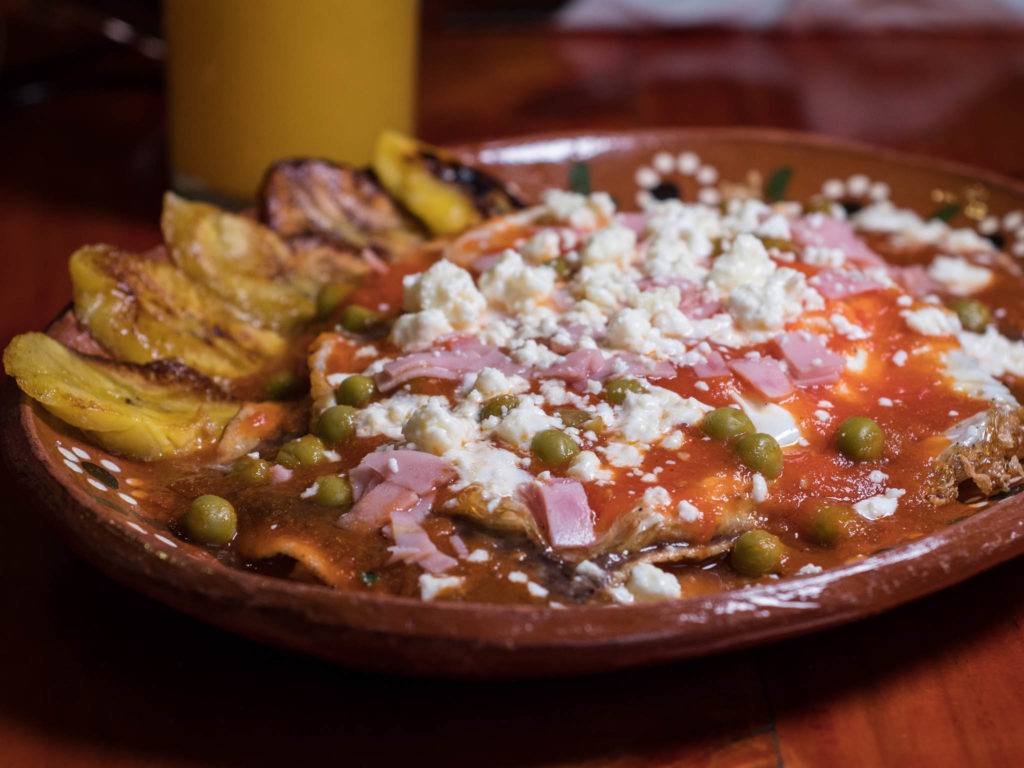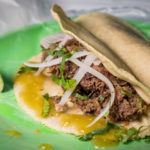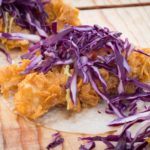We had no idea when arriving to the Yucatan peninsula that Yucatan Food & Mayan Food would feature so many unique and interesting dishes. From succulent pulled pork Cochinita Pibil – a Mayan dish using Mayan/Spanish/Caribbean ingredients. To pre-colonial, traditional Mayan food, like Sikil Pak (ground pumpkin seed dip) or Pavo en Sac’kool (bush turkey in a white sauce with tomato)… To more modern innovations like panuchos (crispy deep fried tortillas stuffed with mashed black beans).
Yucatan cuisine has been a surprising journey that has led to our discovery of more than 50 tasty dishes to feast on.
Although we have traveled around the Yucatan Peninsula in search of traditional Mayan Food, we’ve spent more than a year in the city of Merida (Read our comprehensive travel guide to Merida) – so a lot of our recommendations of places to eat are there.
However, you can track down the dishes mentioned below in other parts of the Yucatan peninsula. But for an authentic experience, I highly recommend leaving tourist areas such as Playa del Carmen, Cancun & Cozumel, and taking a trip to Merida & Valladolid to find the most local and traditional Yucatan food. If you do plan on taking the road less traveled it might be worth brushing up on some Spanish food vocabulary to help you in your pursuit of authentic culinary delights.
It should also be noted that many of our recommendations point to the Yucatan restaurant Manjar Blanco – we are not sponsored by them or any of the restaurants mentioned below. After extensive eating around the region, we’ve just found certain restaurants to be one step above others, so we keep going back for more. We’ve made it our mission to try the same dish in multiple restaurants so we can offer an educated, though still subjective, opinion.
*Disclaimer – This article may contain revenue generating links. If you click, and then purchase something, we may make a commission. This does not increase the price of what you buy. But it does support our blog and help us continue creating fantastic content to help you eat and travel better.
Yucatan Food Table Of ContentsYucatan Food: Essential Ingredients & Terms Mains With Meat (Plato Fuerte Con Carne) |
Before you get started, don’t forget to grab a copy of our interactive Yucatan map – every restaurant featured in this article is listed so you can search by name, or just browse, and find the exact right place, with an accurate location, very easily! PLUS, lots more choice restaurants, cantinas, shops etc. Get it NOW FREE!
Yucatan Food: A Brief History
Before colonial invasion in the 16th century, the cuisine of the Yucatan peninsula was dominated entirely by traditional Mayan food. Many ingredients that play an important role in Yucatecan cuisine today, were not present. Most noticeably, pork, lard, and the Seville orange.
But locally available produce in pre-colonial times still forms the bedrock for Yucatan food. Tomatoes, turkey, chilis, corn, pumpkins.
After Spanish colonization of the region, many other international influences (and foods!) have helped shape Yucatan food. Especially French, Dutch, Lebanese, Cuban and even the British (who were a colonial power in the neighbouring Mayan land now known as Belize).
Original Mayan food, like many world cuisines, has been transformed over the years and has become a fusion. With the oldest Mayan cookbooks dating back only to the 19th century, original recipes are almost impossible to discern – though we can guess based on what ingredients were available, as to which dishes might still be made in a style similar to their pre-colonial days.
In this article, you’ll learn about the incredible Yucatan Food that defines the region now, in the 21st century. Dishes the Yucatan is known for, and that is readily available on menus in local restaurants. For the most part, we’ll avoid dishes that are clearly “Mexican” but not specifically “Yucatecan” – like Guacamole, quesadillas etc.
Yucatan Food Podcast
In this episode of “The Dish” we have a lively chat about some of our favourite Yucatecan dishes from this article. Give your ears something tasty to listen to while checking out the full Yucatan Food Guide below! LISTEN NOW:
Listen & Subscribe: iTunes | Spotify | Podbean | Google Play | Stitcher | RSS: https://thedish.podbean.com/feed.xml
Support: Become a Patron | Tweet: @foodfuntravel | OR Subscribe to our email list
By helping support this podcast you will help us create the very best quality audio and editing, help us have the time away from our regular work to thoroughly research a variety of exciting foodie topics, and allow us to expand and release more than the planned episodes per season – and keep the show on the air long into the future.
CLICK HERE TO BECOME A PATRON TODAY
OR Subscribe to our email list – never miss an episode.
The full list of dishes from this podcast (plus many more) are featured in the complete article below. As well as some of our top picks for places to eat them.
Yucatan Food: Essential Ingredients & Terms
Knowing these Yucatan food essentials will help you understand more about the dishes you can eat in the region.
Habanero & X’catic chilis
Chilis are endemic to the Americas, and specifically the habanero is the chili of the Yucatan peninsula – from Campeche through Yucatan state and to the Caribbean coast. Archeology suggests they first arose in the Amazon basin and moved through Chile north into central America – but Yucatan is now the biggest producer in the world. Habaneros are wildly spicy and used to heat up many dishes and salsas. Locals sometimes even nibble at raw, whole habaneros as an accompaniment to a meal. Face burn alert!
X’catic is a milder chili from the same family as the banana chili. It’s used to add a little punch to sauces. Sometimes it’s charred and added whole to stews and soups.
Recado
Visit any local market in the Yucatan and you’ll see towers of colour in large pots, that look sort of like paste… These are recados. Spices blended together to form the perfect base for specific Yucatecan dishes. Examples like Recado Negro – A black spice paste that is coloured by dried chilis being charred and then those blackened chilis are ground into the blend. Recado Blanco – made with cumin, ground cilantro seeds, oregano and more.
Achiote (Annatto)
These bright red seeds grow inside a prickly pod. Their powerful colour is used as a dye, as well as the seeds being ground and used to make achiote paste for cooking or to be added to spice blends such as recado rojo. Any Yucatecan dish you see that is bright red or orange was likely made with achiote.
Sour Orange (Seville Orange)
Citrus fruit was not present in the Americas until after colonization. The Seville orange, which is a sour, low sugar version of the regular orange, has become an essential ingredient used in many marinades, drinks, and salsas in the Yucatan.
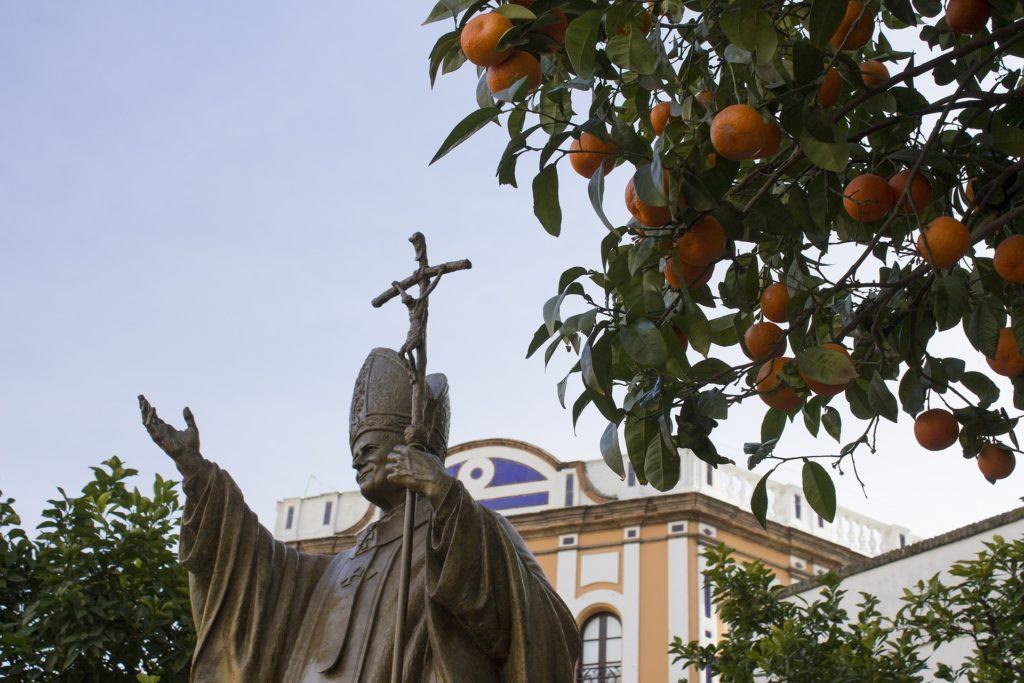
Cocina Economica
Essentially meaning “Economical Kitchen”, The cocina economicas are all around the Yucatan, especially in non-touristy neighbourhoods. In these, you will find typical home cooking of Yucatecan and Mexican classics at incredibly affordable prices (Think $2 – $3 USD for a full meal). It’s simple food, normally with cheap ingredients, but when you find a good cocina economica, with a mama who can make that cheap produce sing, both your wallet and belly will be very happy!
Pib
A pib is the traditional Mayan oven. It involves digging a hole, filling it with hot coals, and burying the thing you want to cook – often wrapped in banana leaves. This “pit” oven style cooking probably did not originate in Yucatan, it almost certainly existed in Cuba prior to the Yucatan, and can be linked to old world cooking practices. But it has been very much adopted in the Yucatan and we’ll be referring to the pib again later in this article.
Lard
Lard (Rendered Pork Fat) is not a Yucatan specific ingredient, of course, but it should be noted that the rich flavors of many dishes are due to lard being the primary fat used throughout the range of Yucatan Food. Vegetarians may find it difficult to eat traditional Yucatan cuisine in the region and you’ll need to ask what oil is being used before you order. For meat eaters, the use of lard makes everything better!
Even the basic “masa” corn dough that is the base for many dishes (like tamales) is typically made with lard. It’s hard to avoid.
Chicharronería
Speaking of lard, somewhere that creates plenty of that fatty goodness is the Chicharronería. These stores, often family run, make sure no part of the pig is left unused. As well as rendering lard, they create the crispy chicharron (Mexican pork rinds), Castacan (Yucatecan Crispy pork belly) and chicarra (offal). The offal may not be for everyone, but that crispy pork belly… wow! More on that later.
You’ll typically find the Chicharronerías in more local neighbourhoods. Visit a Chicharronería – grab some tortillas and start eating! (or, “meating”)
Torta
The word torta, in Spanish, translates as cake. But in the Yucatan, it means sandwich. Often made with pan Frances – a poor man’s version of the baguette. Torta is the surprisingly prevalent way to surround your fillings – and became popular in the Yucatan region while other parts of Mexico were being taken over by tacos.
A local professor and anthropologist, Dr Steffan Igor Ayora-Diaz, met with us to discuss taco history, and it was quite a surprise that until the 1970’s, tacos were barely a thing in the Yucatan at all! Instead, tortillas were used like a spoon, not like a taco. Check out his book Foodscapes, Foodfields, and Identities in the YucatÃn
Yucatan Food: Starters (Entradas)
Sopa de Lima (Limetta Soup)
Sopa de Lima is Yucatan’s most popular soup. With limes originating in Asia, this dish is a post colonial Yucatan food. It should be specifically made with the limetta (sweet lime) that is abundant in Yucatan. When done badly, it’s a sour combo of lime mixed with boiled chicken (or turkey) and stock. But when done well, it’s a complex blended stock (pork, chicken, veg) combined with a special recado and just the right amount of limetta to give only light sourness. Often topped with crispy tortilla strips.
Try a perfectly blended Sopa de Lima at Yucatan restaurant Manjar Blanco, Merida.
Panuchos & Salbutes
Panuchos are a deep fried tortilla, stuffed with mashed black beans. They come out of the fryer crispy – and totally calorific. Then topped with a variety of options, from a basic pickled onion / boiled egg to turkey or cochinita pibil (Yucatecan pulled pork). Panuchos are a relatively modern innovation, appearing in the region in the late 19th & early 20th century.
Salbutes are a plain deep fried tortilla. Thrown into very hot oil, they puff up immediately and emerge fluffy, also ready to be filled with any number of local meat or veg topping.
Both panuchos and salutes are a must try and available prolifically across the Yucatan.
Empanadas con Edam (Con Chaya)
Empanadas are popular across Latin America – but Yucatan has their own special variations. As well as the plain and simple version of a corn tortilla filled with some yellow cheese, folded in half and deep fried… a more Yucatecan option is made with corn and chaya (a local green vegetable) tortillas, stuffed with queso de bola (edam). The edam in Yucatan is strong and salty and needs a lot of heat to melt. This produces a strongly flavoured empanada with a dense cheesy centre.
Papadzules
Papadzules are regarded to be one of the most ancient and traditional Mayan foods. Tortillas filled with boiled egg (though other fillings may have been used in the original versions) and coated in a special pumpkin seed sauce – made specifically from Recado para papadzules – and topped with a tomato sauce.
I’m going to get some negative comments for this but… Papadzules suck! Sorry. Yucatecans eat them in droves. They love them. It’s on every local menu. But, boiled egg wrapped in a tortilla and covered in the blandest of all the Yucatecan sauces… It’s not for me. There is soooo much to love about Yucatan food, but papadzules are not a contender, for me. I’ve tried them in so many places and am always disappointed. If you are a tourist, who hasn’t been eating papadzules since birth, and find somewhere that you really LOVED them (not just liked them) please let me know in the comments.
Look out for the Vegan version of papadzules (available at Hacienda Teya, near Merida Mexico) which is stuffed with pumpkin, instead of eggs – we’re told these are better.
Tamales
Tamales are a Meso-American staple that is not just present in the Yucatan. But they are very popular here. Masa corn dough is stuffed with a filling (sometimes chicken or turkey or boiled egg) and steamed in a banana leaf. A dense and filling snack.
At festival times (specifically around Hanal Pixan – the Mayan equivalent to the day of the dead festival), Yucatecans cook giant tamales called “pibes”.
Ceviche / Cocktels
Ceviche: A starter on every menu at every seafood restaurant on the peninsula… Ceviche may not be originally Yucatecan, but they certainly have adopted it as an essential part of the cuisine. Unlike Peruvian ceviche, where raw seafood is used, Yucatecan ceviche almost always features cooked seafood. Prawns, octopus, caracol, or white fish mixed with the typical ceviche seasonings of lime, cilantro, tomato and onion.
For a very local ceviche, adventurous eaters can try the “chivitas” – a river snail, only found in Yucatan. Castaldi Seafood in Merida sometimes has this on the menu – contact in advance to check for availability. More on Yucatan specific seafood later…
Cocktels = Cocktails. As in, prawn cocktail. Seafood in a tomato based sauce. It’s also everywhere. More specific seafood restaurant suggestions coming up.
Yucatan Food: Botanas (Snacks)
The word Botanas simply means “snacks” and it is used to refer to small plates (like tapas) or to free food that you get when you order drinks in a bar or cantina. It’s very normal in less touristy parts of the Yucatan peninsula to be brought a whole host of botanas after ordering just one beer. The botanas often just keep coming if you buy more drinks – so it’s a budget traveler’s dream. Have a drink, eat for free.
Traditional cantinas in Yucatan state open from 1pm to 10pm (but different times in tourist zones) – and the best free botanas is normally available earlier in the day.
Sikil P’aak – Pumpkin seed sauce
My favorite Yucatecan snack and a quintessential Mayan food. Pumpkin seeds ground with tomatoes and habaneros, eaten with tortilla chips. When done well, it has an inexplicable richness. The umami will keep you coming back for more.
Get a great version of Sikil P’aak at Hermana Republica, Merida.
Liver in salsa – Higadillo Entomatado
This budget snack will top you up with protein and iron for the day. The price of liver (normally chicken) makes this an easy choice for cantinas to give out for free with your beer. Sautéd liver covered in spicy tomato salsa. Simple and tasty. Eaten as botanas at La Ruina, Merida.
Brazo de Reina – Tamale log
This is like a giant green stuffed tamale that is then cut into bite-size slices. The masa dough is green because it is mixed with chaya (a local green leafy veg like spinach). It’s typically stuffed with chopped boiled eggs and Sikil Paak (See above), and then steamed inside a banana leaf. It sometimes has a bit of ground pork inside too.
Kibi Frito / Kibis Pescado
Kibis are a Lebanese import that has taken hold in the Yucatan after the first mass migration of Lebanese immigrants in the late 19th century. Normally it’s a mix of ground beef (originally lamb) and bulgar wheat often flavoured with mint. They are deep fried (unless otherwise stated), and typically come in a rounded diamond shape. Often hollow inside, sometimes with a filling (Edam or something else).
Occasionally in seafood restaurants, you may get fish (pescado) kibis – where the beef is substituted.
We love these little snacks. They are at their best when they are super fresh out the fryer, slightly soft on the inside and crispy on the outside – like an armadillo.
The best we’ve had are at La Terrazza, Merida. (Friday to Sunday only)
Polkanes
Maize, Lima Bean and pumpkin seed fritters. The name translates to “snake head” which refers to the oval shape of the fritter.
It’s a simple deep fried dough snack. If served fresh, it should be crispy on the outside, and dense in the middle. Normally served with a veggie salsa.
Xec
Jicama (a white, mild flavored root vegetable) or mandarin pieces with chilli and lime on. This low calorie snack is often brought to accompany a beer. Or you’ll see small vendors around the markets selling them in little plastic bags.
Chiltomate
A blend of charcoal roasted chili and tomatoes (charred directly on hot coals) into a perfect salsa. Used to accompany many Yucatecan dishes, or can be enjoyed with tortilla chips on its own.
Try the chiltomate (and fresh salsa verde) at Hermana Republica, Merida – Comes as free botanas with your drink order.
Chicharron
Chicharron is super crispy pork skin. It’s often served as a beer snack for free in cantinas. Sometimes topped with some chili or pico de gallo. Because of the easy availability of Chicharron in the Yucatan, you normally get the fresh stuff rather than the packet stuff. Yum!
 An Ideal Coffee Table Book & Authentic Recipe Guide
An Ideal Coffee Table Book & Authentic Recipe Guide
Chef David Sterling spent many years of his life living in the Yucatan, searching out the most authentic food and recipes of the region. Beautiful pictures and a huge depth of knowledge make his “Yucatán: Recipes from a Culinary Expedition” the best book in English for foodies on the topic.
Yucatan Food: Mains With Meat (Plato Fuerte Con Carne)
Traditionally, the main meal of the day in Yucatan is eaten between 1pm and 6pm. Many traditional restaurants will be closed by 6pm. Some more tourist orientated places will stay open until 10pm. If you want an evening meal, you’ll normally be eating other cuisines, not Yucatan food.
Queso Relleno
Yucatan’s ultimate fusion dish. A hollowed out edam cheese (from Holland) filled with spiced minced pork (Pork arrived with th Spanish), topped with a k’ool blanco sauce (A traditional Mayan food) and finished with rich tomato sauce (mexico/yucatan) and olives (Mediterranean). It’s divine!
In essence, this was actually a dish born out of poverty. The rich people of Yucatan would use the centre part of the edam cheese and discard the rinds. The servants would re-use the rinds. Stuffing them with leftover or low quality meat – which would be spiced to improve flavor. Then covered in the low cost, traditional Mayan sauce – the k’ool blanco.
Olives are added to the fancier versions of this dish. You can also sometimes find a seafood version stuffed with shrimp rather than pork.
The absolute best version I’ve had of queso relleno is at Yucatan restaurant Manjar Blanco, Merida.
Relleno Negro
Relleno Negro consists of turkey meat in a jet black recado negro & turkey stock sauce, thickened with masa. In addition, meat balls, also seasoned with recado negro, and with a boiled egg in the centre. This all combines to produce a rich, smokey and medium spicy (can vary) black meal.
The method of preparation for this dish is insanely complicated. The most important factor is the recado negro seasoning blend. Dried chilies are burnt – chile de árbol (hotter), or chile ancho. Their ashes are then ground to make the black recado negro.
The look of the dish may scare a wary foodie, but take on the darkness and you will be rewarded.
Try this at Kinich, Izamal. Or a more rustic version at La Ruina, Merida (Fridays only)
Relleno Blanco
Similar to Relleno Negro, but with the use of the recado blanco spice blend, instead of the recado negro. The recado blanco is peppery with a hint of cloves. Recado blanco spiced meatballs and roasted turkey are added into the soup/stew.
Poc Chuc
Wood fired, marinated thin pork. This simple dish encapsulates the most basic elements of Yucatan food – pork, marinated in Seville orange. Quick grilled on open coals and served with typical condiments, purple pickled onion and chiltomate (see above).
Carne Asada con salsa roja
Carne asada – or grilled meat – is a Mexican staple. In the Yucatan, the slight variation is to often see it grilled on the hotplate with the distinctive bright red color of achiote. This is the perfect dish for the unadventurous carnivore – but a tasty option for anyone really. Mild, tasty and about as simple as it gets. Put your grilled meat in a tortilla, with some local condiments, and you’re good to go.
The best carne asada is cooked over coals (carbon). At Wayan’e, a local institution in Merida, they are barbecued first, then re-grilled on the hotplate.
Cochinita Pibil (& Lechon)
Cochinita Pibil is Yucatan’s version of pulled pork – but with all the Yucatecan flavors and spices. A whole pig (or, often just the pork leg) is marinated in achiote, Seville orange, and other spices. It is then slow cooked in the underground pib oven, baked in giant banana leafs. The meat should emerge falling apart and with a brown-orange color.
Every bite should be juicy and rich. Served in tortas or as an order with tortillas. But, more recently, cochinita pibil is available in a panucho or salbute – which is the more decadent way to enjoy it. Traditionally a Sunday morning specialty, it’s now available everywhere, every day.
Try the Cochinita at Manjar blanco, Merida in a panucho or salbute is the best!
Pollo pibil – the same dish as cochinita pibil but made with chicken, instead of pork, is also an option on some menus.
Lechón is also slow roasted pork… but with crackling. It’s a dish imported to almost every Spanish colony around the world. It’s a little different here in the Yucatan than what we ate in the Philippines – so give it a go. The marinade for the pork is simpler than that of Cochinita pibil – it lacks achiote, and is often marinated in Vinegar, rather than citrus. Unlike cochinita, make sure to ask for the extra crispy skin with your serving (con cuerito).
Try the lechón panuchos at La Lupita, Parque Santiago, Merida
Castacan – Yucatecan Pork Belly
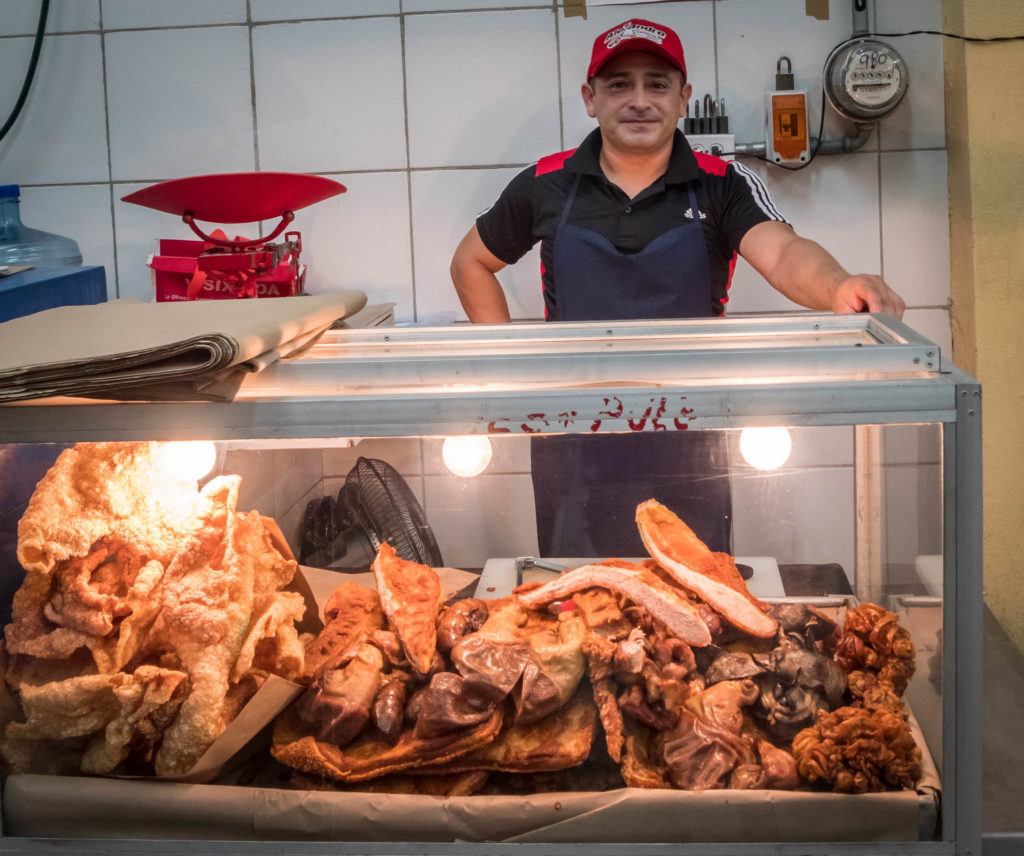
Castacan (Pork Belly), Chicharron (Pork Rinds), Chicharra (Organs) – at the Lucas de Galvez market, Merida
The best pork belly should be crispy and the Yucatecans know how to make their Castacan mega crispy! Imagine 1 inch thick slabs of pork belly, with soft juicy pork meat in the middle, and teeth crunchingly perfect crispy coating on both sides. That’s Castacan. For extra heart disease potential, mix with yellow melty cheese and throw in a torta.
Castacan is slow cooked in its own lard before being baked crispy. Aside from finding it in the Chicharronerías, market stalls and many restaurants serve it.
Pavo en Sac’kool (Turkey)
“Sac’kool” is Mayan and translates as “Thick White Soup”. This dish is baked turkey meat, covered in the thick white soup (made with turkey stock and lard) and topped with rich tomato sauce.
Lard aside, this traditional Mayan dish was likely on the menu before colonial times. Since then, The thick soup part of the dish may also contain olives and some dried fruit or almonds – an Andalusian addition.
Try this at Manjar Blanco, Merida.
Pavo / Pollo en Escabeche Oriental
A vinegar based stew featuring either turkey (pavo) or chicken (pollo). Turkey is the traditional option.
Longaniza Valladolid
This smokey and typically very dry and dense sausage hails from the city of Valladolid in Yucatan state. It normally has an intense flavor and although locals love it served whole, for a more international palate it is best enjoyed when used as an ingredient in other dishes as it adds distinctive character to stews etc.
Dzic de Venado – Whitetail deer
The whitetail deer (Venado) has been present on the peninsula since before colonial times. A prized game meat, it’s cooked after being marinated in Seville orange. Then served with a mix of tomato, onion, and radish.
We tried this at a street stall at the municipal market in Izamal. A more refined version is on the menu at Kinich, Izamal.
Pork & Beans – Frijol con Puerco
The dish that only appears on Mondays… Pork and beans slow stewed together. Served either all together, or separated, or sometimes with the beans mashed, or in the soup with just the pork separated. Fall apart pork and rich tasty beans will satisfy a hearty appetite.
This is your typical home cooked meal that would have always got the family together for Monday lunch. And is still really only available on menus on Mondays – plus, don’t arrive after 5pm or it may be sold out. It’ll be on the menu at every cocina economica in town, plus some other restaurants will have it on special (you may have to ask)
Try a good version at Almendros, Mejorada Merida – Midday to 4pm.
Temozón Smoked Pork (Carne Ahumada)
The smokehouses of Temozon waft plumes of pork-smoke. Well marbled pork leg & rump slowly maturing it’s way to smokey perfection. Just go. Go now!
Visit carnes concepción in Temozon and eat at the onsite restaurant. Also, look out for this meat on menus across the region.
Albóndigas
Spanish meatballs turned Yucatecan. These come in all shapes and sizes, sometimes solid meat, sometimes with a boiled egg in the middle. Sometimes served in a tomato sauce. Sometimes in a recado stew. Albondigas is a typical budget food that you’ll more often find in the Cocina economicas, than in regular restaurants. Ball shaped comfort food!
A few cocina economicas keep their menus update daily on Facebook – check out Cocina Economica La Lupita, Merida.
Lomitos de Valladolid
A slow stewed pork and tomato dish with a hint of chili. The pork should be super tender. Chopped boiled egg is normally added at serving.
X’catic Relleno
The big local yellow chilis are stuffed with spiced meat and covered with the popular white sauce and tomato sauce. It’s like the queso relleno, but with chili for the outer skin, rather than edam cheese. Mild to medium spice.
Eaten at Hacienda Teya.
Filete a la Yucateca
A cross between carne asada (above) and poc chuc (above). Thin pork filet (sometimes beef) is marinated in achiote and sour orange, then wood fire grilled. Served with chiltomate & pickled onions.
Try a good version of this a Kinich, Izamal.
Mondongo K’aab-ik
Beef tripe stew, in a tomato and chili broth. This hearty stew is a popular Sunday morning hangover cure. Although I am often equipped with a hangover, I am rarely equipped with the desire to eat tripe. Ever! So, if you try this dish out, leave me a comment below as to how it went.
Al Pastor – Mexican/Lebanese Doner Kebab
Pastor is a Lebanese Mexican fusion dish that almost certainly originated in Mexico city. But, it’s everywhere in the Yucatan and something you should not miss out on! Thin strips of pork shoulder are marinated in achiote and vinegar, amongst other things, and then stacked on a vertical rotisserie (Trompos) – similar to a doner kebab. The crispy outer bits of meat are sliced into a taco or torta and then if I’m anywhere nearby, eaten rapidly.
Order “Pastor Gringas” for the addition of a flour tortilla and cheese – it’s not just gringos that eat it this way! It’s awesome!
Check out El Fogon in Playa De Carmen (It was even mentioned in the TV Series Master Of None)
Don’t forget to grab a copy of our interactive Yucatan map – every restaurant featured in this article is listed so you can search by name and find the right place, with an accurate location, very easily! PLUS, lots more restaurants, cantinas, shops etc. Get it NOW FREE!
Yucatan Food: Mains With Seafood (Plato Fuerte Con Mariscos)
Seafood outside of tourist zones is very much a daytime thing, most restaurants serve between 11am & 6pm.
Pulpo Frito Ceviche
90% of all octopus in Mexico is caught in the water off the Yucatan peninsula. This makes it the perfect place to eat the freshest octopus – and in non-touristy restaurants, at unbeatable prices.
As I explained above, Yucatecans don’t use raw seafood in their ceviche. And with this dish, they’ve gone one step further. Piping hot and crispy deep fried octopus is mixed into the cool lime based ceviche mix and served immediately. The mix of crunch, hot and cold, a light oiliness and the delicate flavour and texture of really fresh octopus makes this one of my all time favourite dishes… in the world!
I’ve tried this at so many places, and each seems to do it differently. Try Fondito de la Celestun in Merida for a version overloaded with octopus. Or El Haguay in Progreso for a more delicate version.
Pan de Cazon
Originating from Campeche, on the west side of the Yucatan peninsula, Pan de Cazon is layers of tortillas, each filled with cazon frito (fried dogfish), and covered in a mild tomato chili sauce. It’s like a fish and tortilla lasagna.
I’ve found that the dogfish used in this leftovers dish, is often a little past sell by date. With a strong and unpleasant “old fish” flavor. If you’ve tried an excellent and fresh version of this Yucatecan favorite, let me know where in the comments.
Camarones / Pescado / Pulpo a la mojo de ajo (Shrimp / Fish / Octopus)
Although seafood from Yucatan’s rich coastal waters will have been a staple for thousands of years, mojo de ajo is a Latin/Caribbean sauce that arose after colonia times. Your choice of seafood cooked fresh with lime, garlic, chili and butter. One of the most common sauces found in all seafood restaurants in the region.
Seafood Stuffed Fish or Clamares (Calamari) – Pescado relleno con mariscos
Stuffing one type of seafood with another may not be a Yucatecan invention, but the addition of some local ingredients like longaniza de Valladolid (Smoked sausage), certainly makes the local variety hard to try outside of the Yucatan.
Calamari stuffed with chopped shrimp and longaniza is popular in the coastal city of Campeche. Also, try the fish filet stuffed with mixed seafood at Los Pampanos in Celestun – though their giant prawns (wrapped in bacon) are even better if you can only try one thing.
Pescado Frito – Whole fried fish
You can find pescado frito all over Mexico – but it’s certainly unmissable from the coastal towns of the Yucatan. Mexico makes deep fried fish crispier than any of the other countries we have visited all over the world. Don’t miss it!
Try pescado frito (mero fish is a good choice) at Yum Ixpu in Progreso.
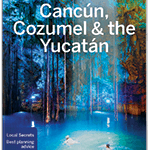 Your Offline Companion To The Yucatan – Get The Lonely Planet Guide
Your Offline Companion To The Yucatan – Get The Lonely Planet Guide
Paper & ebook version available. Have all the information you need to navigate the Yucatan easily and safely. Merida, Valladolid, Chichen Itza, Tulum, Cancun, Cozumel and more.
Get More Info & Check Prices Now
Yucatan Food: Desserts (Postres)
And now for something sweet!
Flan / Queso Neapolitan
Flan is the international dessert of Yucatan. If a restaurant only has one dessert available, it’s probably flan. It’s a pie made from egg and condensed milk – similar to the French creme caramel. Queso Neapolitan is almost the same dish but with the addition of cream cheese in the mix.
Sorbet / Helados
It’s no surprise that a refreshing sorbet or helado (Ice cream / frozen dairy dessert) is a popular choice in the hot Yucatan peninsula. Some top local choices would be the sorbete de coco (coconut sorbet) or the harder to find Helado de chocolate Maya (Mayan spiced chocolate frozen custard)
If in Merida, try out “Dulcería y Sorbetería Colón” in Plaza Grande, or on Paseo de Montejo. Or, if you are staying in a local neighbourhood, listen out for the ringing of the afternoon ice cream bell as ice cream guys ride their bicycles around selling door to door.
Papaya Dulce / Camote Dulce
It’s typical in the Yucatan to preserve fruit in honey or sugar syrup – and that is all this dish is. Papaya is the most common version, but sweet potato (camote) and others are found too.
El Príncipe Tutul Xiu has a wide selection.
Marquesitas – Yucatecan Crepes
The locally popular Dutch/French/Mexican Fusion food that is available from street carts all over Yucatan, after dark. Create an extra crispy crepe, add Dutch edam cheese (and Nutella, normally), and roll into a tube, and you have a salty-sweet budget street dessert.
Meringue (Merengues)
Yucatecan Meringues differ from the European style Meringues in that they are cooked fast, at high heat, so the outside goes crispy but the middle stays soft and creamy. Spending a day on any local, non tourist beach (like Progreso), you’ll have wondering hawkers passing you by regularly shouting “Meh-ren-gay, Meh-ren-gay”.
Drinks (Bebidas)
Horchata
Horchata is a cold ground rice based drink, normally mixed with cinnamon, almonds, and way too much sugar. I find it unbearably sweet, but Yucatecans love it!
Jamaica
Jamaica (pronounced ha-my-ka) is a purple colored iced beverage made with hibiscus flower – and also, typically, too much sugar. I am a huge fan of the flavor, even if it’s a little sweet. The best version I had included some additional spices (like cloves) at the Atipico taco truck, Merida – they also have some exciting tacos!
Ojo Rojo / Michelada / Chelada
These are not specifically just Yucatecan but are very popular here. Each is a mix you add to your beer, along with ice. The Chelada is the most basic, consisting mainly of lime. The Michelada is the next step up, where you also add Worcester sauce and chili (and some other possible ingredients, like soy sauce). The final stage, the Ojo Rojo (red eye) involves adding clamato juice to your Michelada.
For those who like their chili, what may sound like a hot weather nightmare, is actually immensely refreshing.
Try my favorite Ojo Rojo at El Cardenals, Merida, or a fantastic Michelada at Cantina Chen Bech Merida.
Agua Frescas
Agua Frescas are fresh, watered down fruit juices mixed with ice and a little sugar. By watering down the fruit, it’s less dense and a great thirst quencher in the tropical heat. You’ll see these sold around local markets with plastic bags over the top of polystyrene cups – to keep the dirt and insects out. Or just get them on the menu at most restaurants – in a glass.
Xtabentun
A sweet Mayan liqueur. Xtabentun (pronounced Shtabentoon) is also a local plant with psychotropic properties. Bees that visit the plant, create honey that was traditionally fermented to make the Xtabentun liqueur.
The modern version of the liqueur lacks the psychedelic effect as it is now made from regular honey (due to the rarity of the Xtabentun plant). It is now also fortified with rum and anise is added, as that was seen as a taste that would sell better to the Europeans. Xtabentun liqueur is sometimes used to make a glaze for duck.
Pox
Pox (pronounced posh) is a strong, clear spirit distilled from maize. I think “moonshine” would be a fair description. It’s powerful stuff. Best enjoyed mixed in a cocktail. Try the pox with berries (moras) cocktail at Pipiripau, Merida Mexico.
Yucatan Food: Breakfast (Desayuno) & Brunch
Breakfast starts as early as 5am and eventually fuses into brunch & early lunch until about 1pm. Panuchos, tacos, tortas and salbutes are some of the most common breakfast dishes – which are also often available later in the day too, with a change of venue. But the region has a couple of specific regional breakfast specialties…
Huevos Motuleños
Fried eggs, covered in tomato sauce, peas, chunks of ham and cheese. Served over tostadas/tortillas, with fried banana on the side. The dish gets it name from the town where it was invented, Motul, in Yucatan state.
The legend surrounding this dish suggests it was invented by accident. The governor of Motul at the time, Felipe Carrilo Puerto, was famed for liking his lunches served all on different plates – so he could combine each condiment and food item as he pleased. At one particularly large lunch, the kitchen at La Sin Rival restaurant ran out of serving plates and so the chef served eggs with all condiments on one plate – Huevos Motuleños was born!
The original restaurant no longer exists, but a local favorite to eat huevos Motuleños is at the Motul market with Doña Evelia.
Temozón Pork & Eggs (And Other Egg Dishes)
Eggs for breakfast is typical throughout the region – whether it be scrambled with chorizo, or chaya (local green like spinach), served in a taco or in a torta.
For something more uniquely Yucatecan, try the Temozón pork scramble at Manjar Blanco, Merida.
Don’t forget to grab a copy of our interactive Yucatan map – every restaurant featured in this article is listed so you can search by name and find the right place, with an accurate location, very easily! PLUS, lots more restaurants, cantinas, shops etc. Get it NOW FREE!
Are You Hungry Yet?
There are so many different things to try in Yucatan. Yucatan food is way more than just tacos! So get out there and eat the good stuff :-)
PLUS – Check out our comprehensive Merida Travel Guide & our post on our favourite Restaurants and Places to Eat and learn why Merida is such an exciting food and culture destination.
Love this post? Why not pin it on your favorite foodie Pinterest Board?
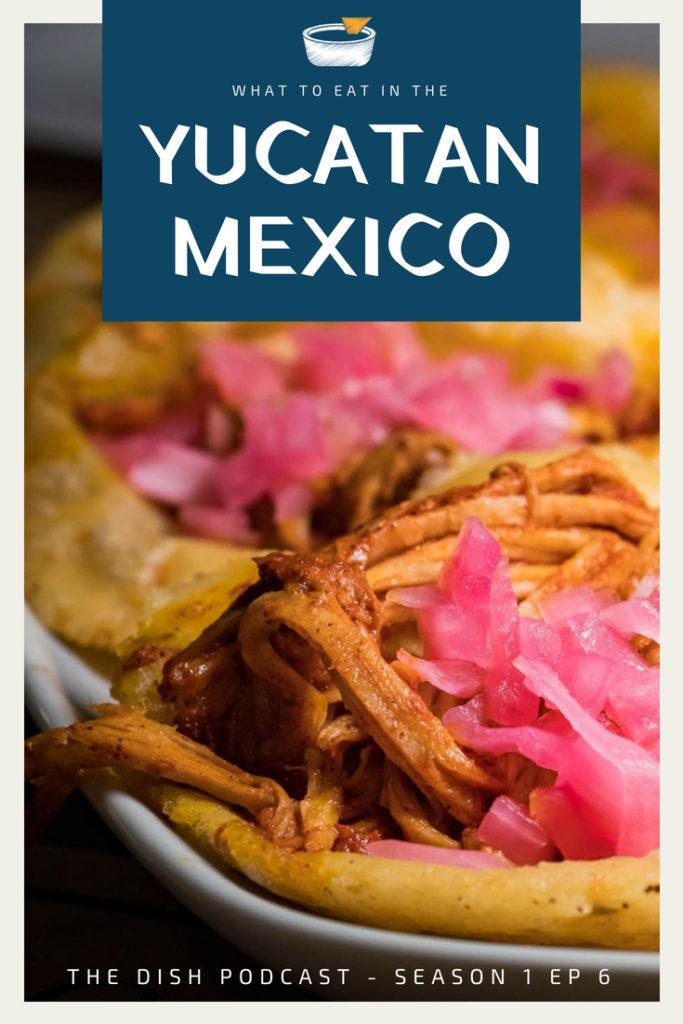 |
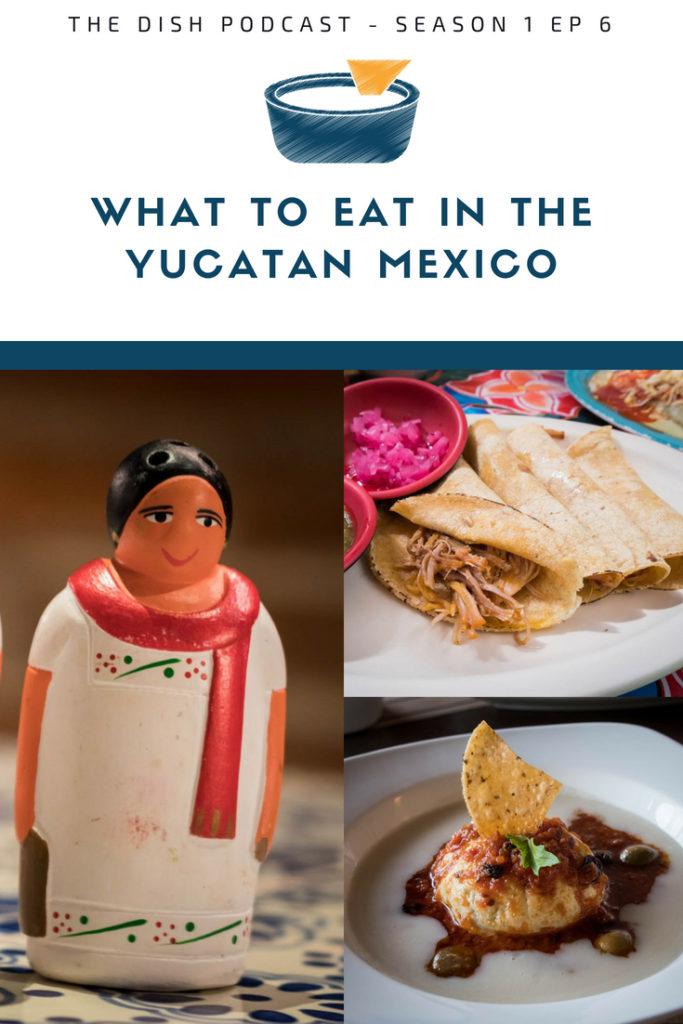 |
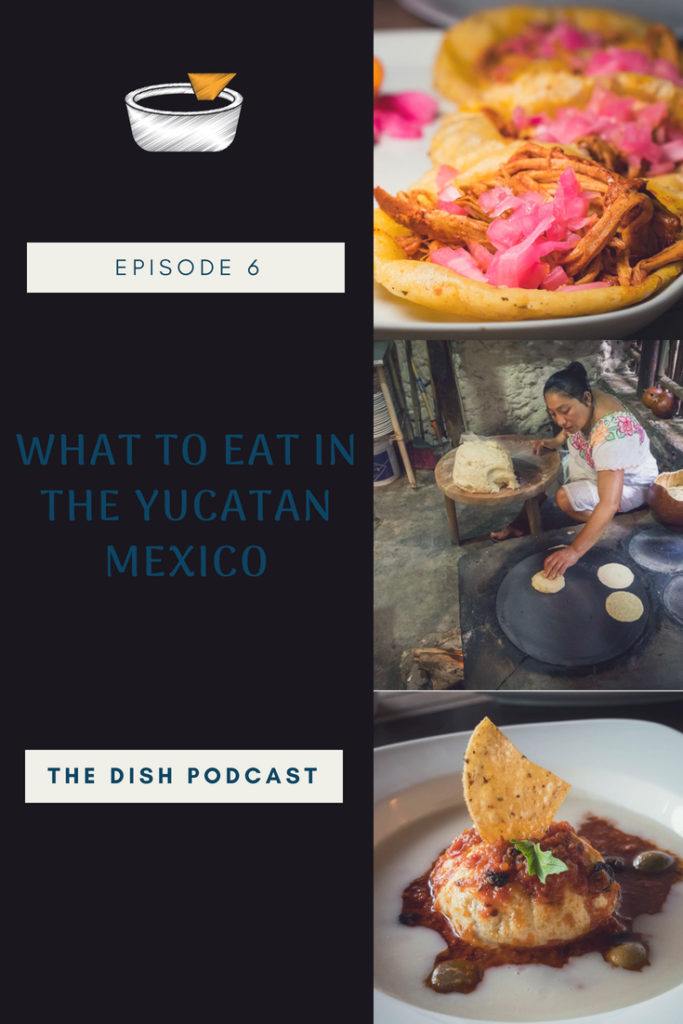 |





